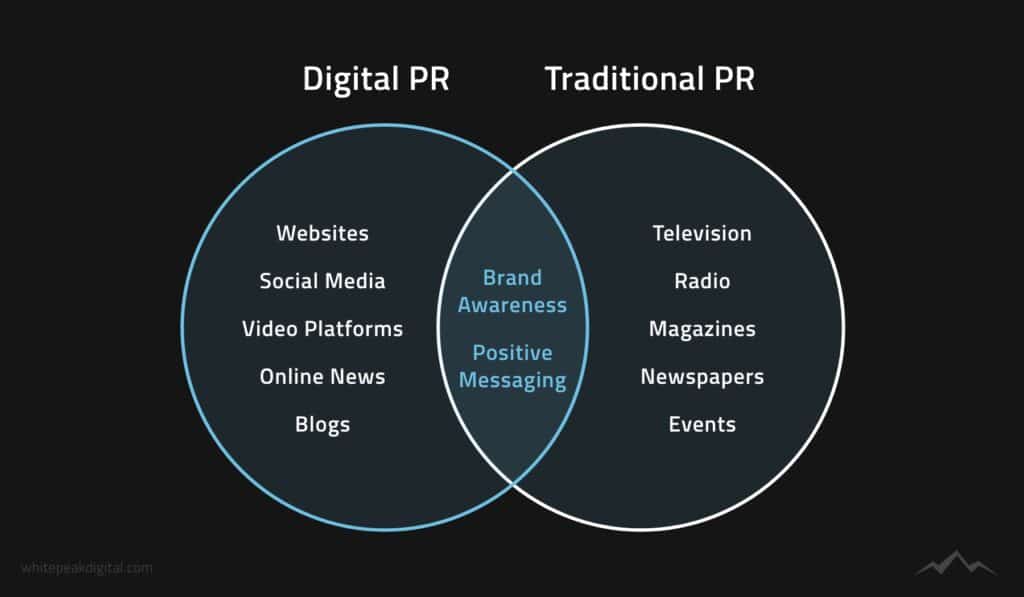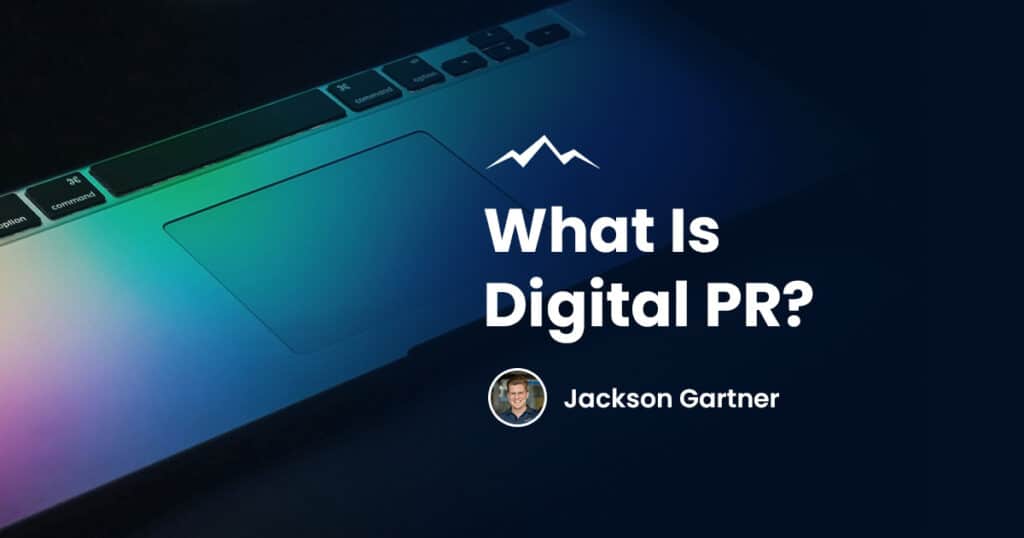Have you ever wondered how some brands dominate online conversations, earn the best media coverage and rank at the top of search engine results? The secret is often digital PR.
Digital PR is a marketing strategy that bridges the gap between content, communication and visibility. It blends media outreach practices with SEO tactics to build a strong brand authority.
Whether you are a startup trying to build credibility or a large-scale business planning to enter new markets, digital PR can open doors for you.
In this article, we’ll walk you through digital PR, its key elements, how to initiate a digital PR strategy and common mistakes to avoid. Let’s get started!
What Is Digital PR?
Digital PR is a promotional strategy that aims to make a brand impossible to ignore online.
This widespread visibility is achieved through online advertising, social media platforms, news channels and PR networks.
You can think of it as traditional PR, but with a few key differences – mainly that it takes place online, using tools like websites, blogs and content marketing.
In recent years, even old-school PR specialists have caught on to the power of digital PR and are using it to reach new audiences.
Here are the key aspects of digital PR:
- Seach Engine Optimisation: By adhering to SEO guidelines, digital PR increases high-quality backlinks, brand mentions, prominent media coverage and meaningful relationships with relevant figures.
- Online Reputation Management: A brand’s online presence determines how it is perceived by the masses. This involves the promotion of positive sentiments and a strategic response to both positive and negative feedback.
- Driving Website Traffic: Digital PR campaigns increase website traffic on a brand’s website, which increases the brand’s visibility across various platforms and enhances link-building opportunities.
- Valuable Content: Brands often hire creators, journalists and bloggers to distribute engaging content. This is content marketing, backed by original stories, market research, press releases and sentiment analysis to boost endorsements and online mentions.
- Digital Marketing: PR relies on marketing efforts and SEO-driven tactics in the form of social media marketing, online advertisements and community relations.
What Is The Difference Between Traditional & Digital PR?

While both types of PR aim to spread the word about your brand, they go about it in different ways.
Traditional PR leverages offline media channels like print publications, radio, magazines and television.
This is the core reason behind traditional PR specialists building strong relationships with editors and journalists through direct communication.
On the other hand, digital PR’s exclusive focus is on digital platforms and online media channels such as news websites, blog posts and social media.
The objective goes beyond brand awareness and includes boosting online engagement with PR campaigns and link-building.
These campaigns feature resources designed to achieve maximum coverage and recognition from industry leaders.
Although traditional PR works well, its key limitation is inaccurate key performance indicators. Digital PR offers measurable metrics like keyword ranking, organic traffic, open rates and search volume.
Additionally, digital PR provides more creative freedom and the liberty to target a niche audience with content tailored to their preferences.
How To Create An Effective Digital PR Strategy
Starting a digital PR campaign requires a strategic approach if you are aiming to make an impression in front of the masses.
Here’s a step-by-step process to help you begin your digital PR journey:
1. Set Clear Goals
Before launching your PR campaign, clearly note down your objectives and the purpose of the campaign. Your goal can be anything, such as:
- Get more people talking about your brand
- Generate high-quality website backlinks
- Introduce a new product
- Position your brand as a leading authority
Having clear goals in mind helps your marketing team develop a strategy that gets results fast.
2. Understand Your Audience
Don’t target aimlessly, identify who you are targeting and who they are.
Understand their online behaviour and preferences to create a robust customer profile. Focus on the following:
- Demographics (age, gender, race, ethnicity)
- Interests
- Maximum time spent on a platform
- Content consumption habits
- Analysing feedback on related products
- Common challenges faced
Knowing your audience inside out helps you create content that really resonates with them.

3. Create Valuable Content
Everyone’s creating content today, but the winner is the content that stands out.
Therefore, make sure whatever content format you go forward with features valuable information worthy of the user’s time. You can provide value through:
- Press releases
- Research-driven articles
- Infographics
- Engaging leadership stories
- Expert commentary
Note: These are just ideas. You can provide valuable content through diverse content formats. It all depends on how creative and versatile your team is.
Ultimately, the content must align with your target audience’s interests and social media campaigns.
4. Build A Strong Distribution List
Today, there are people who can help you get your marketing content seen by the right people. Look for:
- Social media creators that your target audience follows
- Journalists who cover topics that fit your niche
- Bloggers with a following that aligns with your ideal customer
- Publication houses that are a good fit for your story
Check whether their audience and reach match your expectations and preferred customer base. Connect with them through personalised pitches and surveys that highlight your unique story and vision.
Be concise and clear about link-building opportunities. Offer exciting collaboration deals and share industry-specific research with exclusive angles wherever possible.
5. Choose The Right Distribution Channels
Your ideal customer could be anywhere online and it’s up to you to figure out how to reach them.
Use tools like Google Analytics to identify the digital channels and platforms most preferred by your audience. These channels might include:
- Established news websites
- Email newsletters
- Blogs and articles
- Trending media channels
Top brands often mix two or three distribution channels, such as Google Ads and Meta Ads, depending on the audience’s activity and their preferred outreach medium.
6. Execute Campaigns Properly
It’s all too easy to deviate from your original plan when you’re executing a PR campaign. It might be last-minute changes, or a sudden urge to go viral, or just a mindset shift.
Some things to keep in mind include:
- Distribute relevant content and pitches according to your outreach plan
- Be responsive to media inquiries
- Provide additional information if needed
- Engage with audiences on social platforms

The Different Types Of Digital PR
Digital PR is all about using a range of media and tactics to boost brand awareness, online presence and credibility.
Here are the different types of digital PR:
1. Press Release
Press releases are official statements or announcements about a prominent business move or a story from organisations or people.
These statements are distributed to online news forums, media outlets and reporters to generate media coverage.
Digital press releases take the form of thought leadership articles, product launches, partnerships and events.
2. Guest Posts
Guest posts are a PR tactic where agencies write high-quality articles for other brand websites and reputed publications.
These articles reach a new audience, build authority and generate high-quality backlinks.
Guest posts can include expert commentary, interviews, collaborative content and promotional articles.
3. Influencer Marketing
Brands often collaborate with micro, macro and mega influencers to increase their visibility.
They leverage their audience base strategically to promote their product webinars, ambassador programs and event partnerships.
This type of PR works well when your goal is to target a niche audience, achieve organic engagement and generate authentic feedback.
4. Social Media Engagement
With the latest market shift, being active on social media platforms can help you encounter opportunities you didn’t even think of.
A strategic active participation can be established through live streaming, contests, broadcast channels, social listening and community building.
This also leaves a positive impression on the viewers and builds long-term relationships.
5. Hero Content
Hero content is a type of content-led digital PR that involves creating diversified, detailed content in the form of surveys, research reports, infographics and interactive tools.
These content types uses visuals to simplify complex topics and drive online traffic.
Hero content helps readers and visitors visualise your unique selling proposition (USP) and proceed further following the marketing funnel.
6. Newsjacking
Newsjacking is the practice of getting your brand into a trending news story or event.
By getting your brand involved online in a trending news story or event, you can gain significant media attention. There are two types of newsjacking:
- Reactive: This is when you jump on a breaking news story and try to get featured.
- Proactive: This involves monitoring calendars for major events and preparing content in advance.

Does Your Brand Need Digital PR?
It can be tough to tell whether your brand needs digital PR and sometimes it’s only when you look back that you see the signs.
Here are the key signs that indicate your brand needs digital PR:
1. Poor Online Visibility
If your brand website doesn’t show up on the first two pages of SERP, it’s a clear indication of poor keyword optimisation and SEO practices.
This naturally disrupts your presence in social media forums and online publications.
Low search engine visibility results in missed opportunities, inability to enter new markets and inadequate recognition.
Here, digital PR can maximise your online visibility by securing mentions in high-traffic platforms and domains.
2. Weak Brand Credibility
The audience often refers to established forums to validate a particular brand and its USP.
If your brand has no mentions in reputable sites and media channels, it’s a direct question of your legitimacy.
What digital PR does is it secures third-party coverage and reviews to build authenticity across diverse customer groups.
3. Inefficient Measurement of Campaign Results
As discussed above, brands leveraging traditional PR often struggle with measuring their impact.
This inefficiency obstructs strategic campaign planning and results in your budget and resources moving in circles.
Not monitoring PR efforts is the same as operating in the dark. Digital PR provides real-time analytics and enables marketing teams to refine PR strategies with evolving trends.
4. Low Customer Engagement
If your brand voice fails at making meaningful interactions with the customers, it is missing out on loyalty and advocacy. These are the two primary elements of brand building that determine its longevity.
The clear signs are poor social media engagement, increased turnover rates and lack of feedback.
Digital PR facilitates personalised audience engagement through interactive content and fosters long-term customer relationships.
5. Getting Overlooked
If your competitors are getting featured in reputable publications and you’re not, then it sends the wrong message to your audience.
This competition is also visible in search page ranking and buzz generation across social media platforms.
This is another direct indication to integrate digital PR into your marketing strategy.
To sum it up, if your brand is struggling with poor presence, ineffective organic marketing and competitive disadvantage, it’s time to prioritise digital PR.
This approach will help you build authority, attract the right audience and achieve measurable business growth.

Common Mistakes In Digital PR
It’s pretty easy to make mistakes when you first start out with digital PR. Here are some common pitfalls to look out for to save yourself time & resources:
1. Lack of Personalisation
Sending irrelevant, generic and spammy pitches in the name of personalisation is a major mistake.
This annoys bloggers, online journalists and everyone you reach out to, which kills the possibility of valuable collaborations.
It’s best to create tailored messages and share your previous work relevant to their interests.
2. Ignoring Social Proof
Brands with poor visibility make the mistake of ignoring testimonials, reviews and social proof.
Social proof is a psychological medium to encourage new customers to move ahead and choose your brand.
Neglecting social proof reduces trust and credibility. Data-driven content like case studies and success stories persuades both media and audiences to notice your brand.
3. Creating Low-Effort Digital PR Content
Churning out content just for the sake of it harms your brand reputation. Avoid content that just follows trends and isn’t well-researched.
Create content that is audience-relevant and attracts organic traffic.
4. Overlooking SEO Guidelines
SEO is non-negotiable when you aim to build an online presence. In fact, the entire game plan is built on SEO guidelines.
No matter how good your content is, if you ignore SEO, the content will fall short in the long run.
Collaborate with our SEO Brisbane experts to implement effective strategies and do justice to your PR marketing efforts.
5. Not Having a Clear Strategy
Launching ad campaigns and spending tons of money on marketing without a clear pre-determined strategy is like sailing without a destination.
Without setting a clear strategy for local SEO and performance analysis, it is difficult to identify weak areas and predict risks.
Define your target audience and monitor key KPIs to measure a campaign’s effectiveness.

Frequently Asked Questions
Why is digital PR important for business?
Digital PR boosts the visibility of your business and solidifies an online presence. This garners credibility, website traffic and brand awareness and improves search rankings.
What are the key components of a digital PR strategy?
The key components of a digital PR strategy are media outreach, link building, content creation, tracking key KPIs and meaningful collaboration.
How does digital PR improve SEO?
Digital PR fosters trust and attracts the attention of reputable publications. This generates high-quality backlinks from high-DR websites and builds authority in Google search rankings.
What content types work best for digital PR?
Thought leadership articles, data-driven articles, press releases, infographics and interviews with industry experts are known to work best for digital PR.
Can I manage digital PR by myself?
If it’s a small business, you can manage PR marketing in-house. But if you work with agencies, you can access advanced media monitoring tools, industry experience and media contacts to launch large-scale campaigns.





